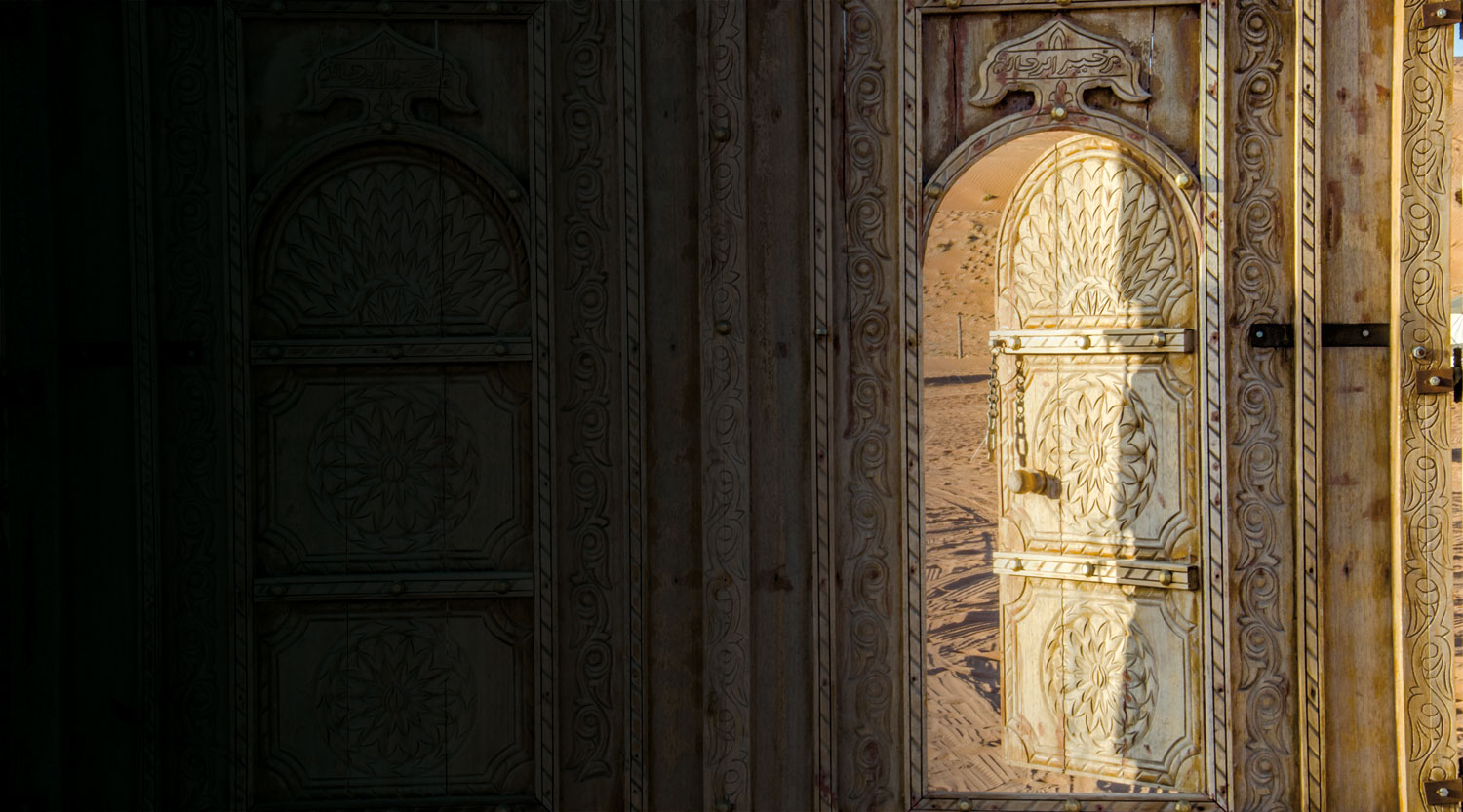

Used in visual representations of ancient oriental gods, people and building from the earliest of times, wood and the objects of wood have become a part of everyday life. In Oman, wood was used to build shelters, houses, vessels, and utensils and was commonly seen in local households even today.
In the periods that followed the Middle Ages, in Islamic countries, wood served many different purposes. It was not just a traditional building material but in many regions, columns of mosques were made entirely of wood artfully decorated with different motifs.
The importance of wood transcended dwelling constructions. Other than being utilised as wooden ceiling beams and capitals, they can be seen in royal and private houses, doors, window frames and shutters along with storage boxes and containers, cupboards and chests.
In Islamic architecture, the door or gateway to a building is often the most elaborately decorated feature.
The most common structures built using wood were the minbars (pulpits), rahles/marfas (Quran stands), some mihrabs (prayer niches) and maqsuras (enclosed places for the rulers within the mosque next to the mihrab). In the mosques, Quran stands made of wood and in homes, wooden chests are to this date an important part of furniture called the mandoos.
The Omani Door

A typical Omani front door is double sided with a smaller door on the side. Also seen in other parts of Asia, the door itself might be plain without much decoration but within the region, in most cases, the doors feature carved centre posts, surrounded by a carved frame. Some of the doors are richly decorated with carved ornaments.
In the Sur region, a unique style of decorated doors can still be seen even today. Doors here are studded with ironwork with protruding wooden frame, an arched top or lunette decorated with a superimposed palm motif with the motif being repeated on the second leaf or shutter of the smaller door within the bigger door.
Many of the vegetal decorations of doors and frames give an impression of its eastern origin.
Understanding the Sultanate’s history, it can be assumed that many of the doors seen in this style were imported from countries further east from India. Their decorations inspired the style of Omani woodcarvers which can be seen across Sur.
Similarly, these designs can be found on doors across Zanzibar, further proving the close link between coastal Oman to India and countries further east. Some evidence clearly showed that the richly decorated doors of Zanzibar were introduced during the rule of the Sultan Barghash, the third Omani ruler who governed there from 1870 to 1880.
Mandoos or Chest
Until quite recently, the mandoos or chest were commonly found across Omani households. In most cases, these chests would measure approximately one metre long by half a metre in height and depth, and some even had drawers at the bottom of the chest.
Most mandoos were decorated with brass studs placed in geometric zigzag lines, stars, rings, circular medallions, rhombi, among other patterns. Additional decoration can be pierced or impressed brass sheeting or pieces of cast brass.
Oman is a land of ornamented wooden doors, windows and ceilings. Till today, they are brightly painted and decorated with stones, metal and carvings. Brought into the Sultanate from all over the world in the medieval times, they remain strong part of tradition even today.
Wooden doors, frames, grills and shutters are important elements in the decoration and embellishment of traditional Omani architecture. Al Muqaddasi, a late 10th-century geographer quoted, “Nowhere in the Muslim countries, I saw more grandiose and more beautiful houses. They rise up high and are built out of teak, wood and bricks.”
TITASh CHAKRABORTY
Oman Observer is now on the WhatsApp channel. Click here



